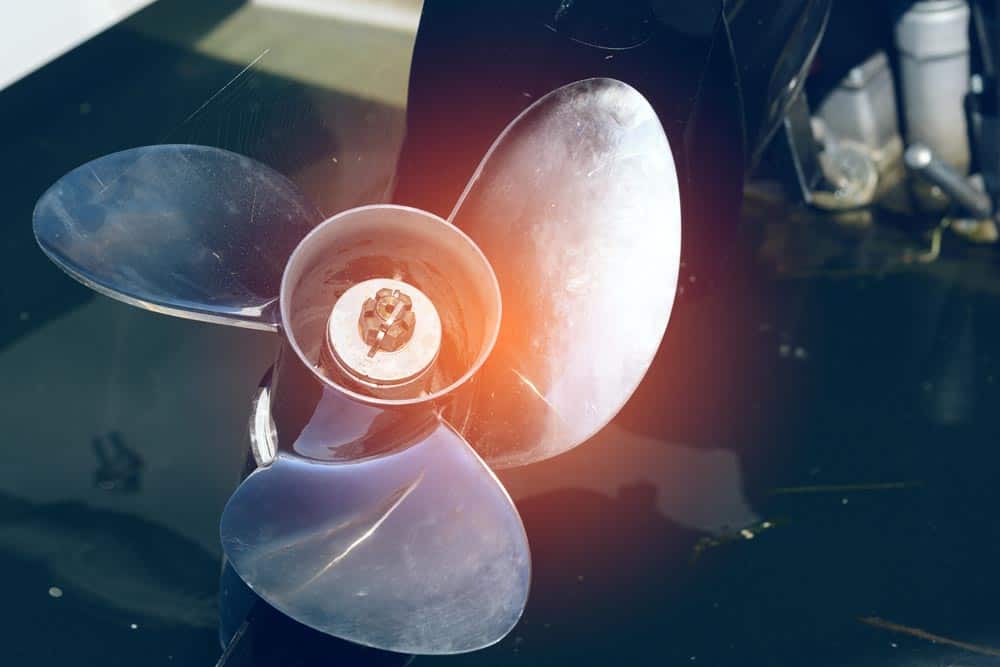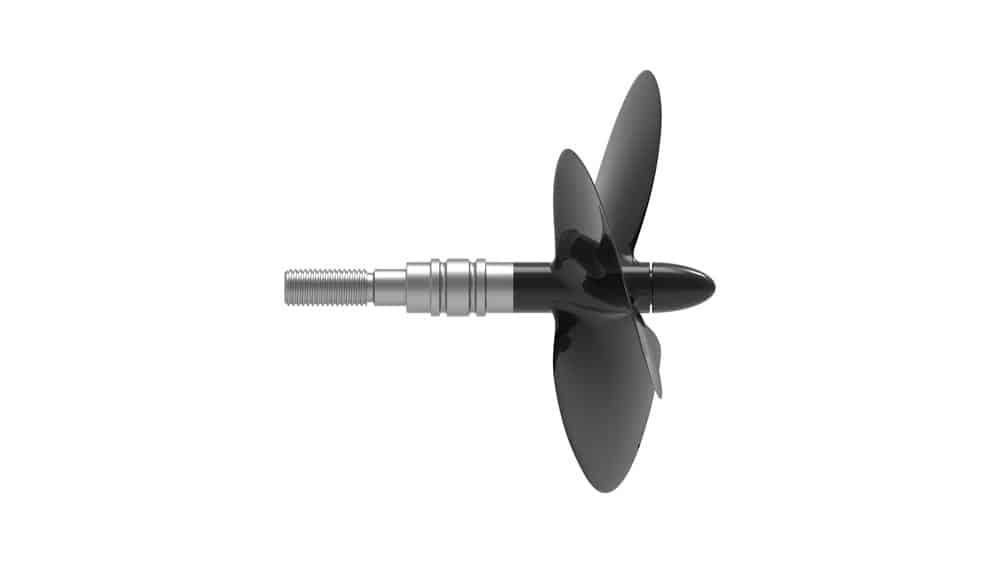The key criterion for choosing a propeller is whether it allows your yacht’s engine to go up to a speed inside the range defined by the manufacturer of the engine—generally within 500 revolutions of the top rpm. This ensures the engine has a long life by not pulling it down or allowing it to over-rev.
There is probably nothing that can ruin a vacation faster than a malfunctioning engine in your yacht. Before leaving for the holiday, more so if you’re in the business of operating luxury yachts, make sure you check your propeller to see if it needs replacement.
Your engine most likely came with the propeller that met that minimum standard, but you may choose from a selection of props that’ll allow your engine to turn up while varying in the number of blades and pitch, as well as possessing somewhat subtle characteristics.

Checklist When Gathering Propeller Information
Before anything else, if you still aren’t sure of the exact propeller you need, then don’t worry. Just make a list of the details about your boat or any other thing that will help a service tech assist you, then call up a supplier like Get A Prop, and they’ll help you find exactly what you want. Some of these things have already been discussed, but here is everything in list form to make cross-checking easier:
- The current prop diameter
- Make a propeller pitch.
- Rotation of props with the left or right hand (the right hand being clockwise)
- Count of blades
- Substance (Usually stainless or aluminum)
Other Relevant Information
- Part number from the manufacturer
- The diameter of the shaft and the number of splines or keyways
Data From the Engine
- Count of engines
- Horsepower stated
- RPM at WOT Gear case size Manufacturer, model, and year

Other Extremely Valuable Knowledge
- Measurement of displacement in cubic inches or centimeters
- Trim tabs or power trim
- Data on Boats
- Overall length Hull content
- Year, model, and manufacturer
- Form of the hull
- top speed (current/desired)
Prop Factors to Consider
Propeller Dimensions
Expressed as a pair of numbers, diameter, and pitch, with the diameter always coming first. Diameter is defined as the distance between the middle of the hub and the tip of any blade multiplied by two. Smaller prop diameters are typically associated with smaller engines or fast, high-performance vessels. Pitch is the hypothetical forward distance traveled by a prop in one revolution, measured in inches. Consider pitch to be the same as speed or the gear range on any vehicle’s transmission.
Rake
The degree to which the blades tilt forward or backward in relation to the hub is referred to as a rake. Rake can influence how water moves through the propeller, which can impact yacht performance. It aims to enhance the bow of the boat, reducing the wetted surface area of the hull and increasing top-end planing speed. With today’s vigorously raked props, you may need to add a high-performance trim tab to your shopping cart. The tips of the blades of these new pros can collide with your engine’s older style trim tabs.

Cupping
Cupping of the props blade’s outer edge is popular on many props. A downwards curve inside the blade’s rim (similar to a plane’s wings with the ‘flaps’ downwards) allows for a better hole aim, reduced slippage, and airflow, as well as an improved bite on the water. A cupped prop can enable the engine to be trimmed by bringing the prop near the surface while also lowering rpm by 150 to 300.
Pitching
Selecting a propeller that has a different pitch will fix over or under-revving. Engine revolutions and pitch have an opposite relationship. Raising the pitch reduces engine RPMs while reducing the pitch increases engine RPMs.
As a general rule, if the engine is over-revving, a prop with less pitch should be considered. Consider a prop that has more pitch if the engine is over-revving.
Material
Aluminum is the most widely used and least costly material. Many outboard and sterndrive systems are compatible.
Because of stiffer, smaller blades, and more sophisticated designs, stainless steel outperforms aluminum. When traveling at speeds greater than 50 mph, or if your boat often passes over sandbars or oyster beds, this is the best option. Stainless steel is more expensive, but it’s five times stronger than aluminum. Stainless propellers can be restored to like-new condition at a higher cost, while repaired aluminum can suffer from excessive wear and a lack of power.
Four or Three Blades
Three-blade designs provide all-around efficiency with a speed advantage at the top end. Four-blade designs suit yachts that are not easy to get on the plane, are underpowered, or are used in water sports where top-end speed isn’t important.
In certain cases, four blades of the equal pitch will reduce the rpm by 50 to 150rpm. Three-blade propellers are ideal for yachts equipped with three-, four-, or six-cylinder outboards and sterndrives, as they provide good hole shot with the best performance.
Three-blade props have blades that cover approximately 50 to 55 percent of the usable area within the circle created by the propellers’ diameter (referred to as the Diameter Area Ratio). Adding a fourth blade raises the DAR to between 60 and 65 percent, which means you should expect more power to keep your yacht planing at lower rpm, a possible improvement in fuel efficiency, but also a 50–100rpm drop at WOT.
Modular Hub Systems
Modular hub systems are made up of a frame that attaches to the engine’s splined shaft as well as a propeller body that attaches to the hub. They are bought separately from the propeller, but it helps if they are discussed together.
These systems have two primary advantages. First, if there is ever a major prop hit, the composite hub separates, reducing the possibility of motor, engine drive, or propeller injury. Faulty hubs can be easily replaced by the user, lowering the propeller strike’s ‘replacement rate.’ Even if the propeller is bent and the hub is still in good condition, replacing only the propeller is less costly. If you have a problem, you can save money in either case.
In Conclusion
In certain instances, yacht builders collaborate with engine suppliers to specify the best propeller for the particular engine and boat they are selling. If you want to repair a broken prop or improve performance, contacting the designer of your yacht is a good first step. Alternatively, contact the service tech at a nearby boatyard. These discussions can save you the time and cost of a test quest for the best propeller.
Jennifer
Information sourced by the author for luxuryactivist.com. All content is copyrighted with no reproduction rights available. Images are for illustration purposes only.
